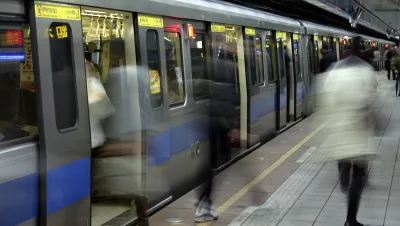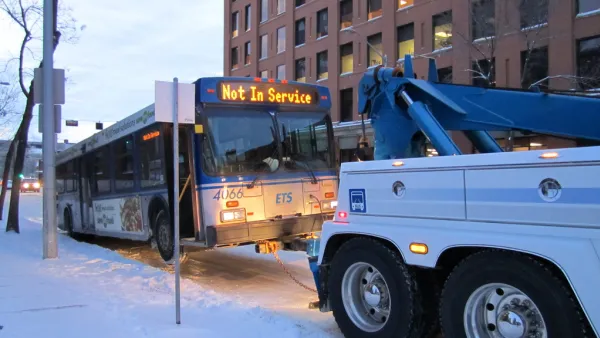Payton Chung summarizes a new report from the Transportation Research Board that reveals the indicators of successful transit projects.

Payton Chung reports on "Making Effective Fixed-Guideway Transit Investments: Indicators of Success," a Transit Cooperative Research Program (TCRP) report for the Transportation Research Board by researchers at the University of California, Berkeley. According to Chung, this "landmark report…identifies the factors that set successful transit investments apart from the rest." In his summary of the report, Chung notes that the study, which examined more than 140 elements of including location, demographic factors, and design of more than 55 rail and bus rapid transit systems, concluded that the secret to attracting high ridership is to "[serve] areas that are dense in both jobs and population and have expensive parking."
Per Chung, while the connection between high density jobs and population and transit is not new knowledge, the TCRP report's findings suggest "...access to these specific kinds of [high-wage] jobs, rather than to jobs in general, is a hallmark of transit-oriented metro areas...that perhaps easy transit access to high-wage jobs draws 'choice' riders out of cars and onto transit. Meanwhile, leisure jobs clustered around transit stations could be a proxy for '24-hour' mixed-use urban neighborhoods that draw transit riders throughout the day." Additionally, Chung notes that "the only design factor that seemed to have a significant effect on ridership was whether the route is grade-separated (in a tunnel or on a viaduct). In isolation, transit speed, frequency, or reliability did not have significant impacts, but the great advantage of grade-separated routes is that they can run quickly and reliably through high-density areas."
Chung adds, "The Berkeley researchers’ goal was to create an easy-to-use ridership forecasting model, built with data collected from finished projects across the country, that can help planners evaluate both individual transit routes and systemwide changes." The research team has provided a handy Excel file that can be used to predict riderships and cost estimates.
FULL STORY: The Secrets of Successful Transit Projects — Revealed!

Analysis: Cybertruck Fatality Rate Far Exceeds That of Ford Pinto
The Tesla Cybertruck was recalled seven times last year.

National Parks Layoffs Will Cause Communities to Lose Billions
Thousands of essential park workers were laid off this week, just before the busy spring break season.

Retro-silient?: America’s First “Eco-burb,” The Woodlands Turns 50
A master-planned community north of Houston offers lessons on green infrastructure and resilient design, but falls short of its founder’s lofty affordability and walkability goals.

Test News Post 1
This is a summary

Analysis: Cybertruck Fatality Rate Far Exceeds That of Ford Pinto
The Tesla Cybertruck was recalled seven times last year.

Test News Headline 46
Test for the image on the front page.
Urban Design for Planners 1: Software Tools
This six-course series explores essential urban design concepts using open source software and equips planners with the tools they need to participate fully in the urban design process.
Planning for Universal Design
Learn the tools for implementing Universal Design in planning regulations.
EMC Planning Group, Inc.
Planetizen
Planetizen
Mpact (formerly Rail~Volution)
Great Falls Development Authority, Inc.
HUDs Office of Policy Development and Research
NYU Wagner Graduate School of Public Service




























